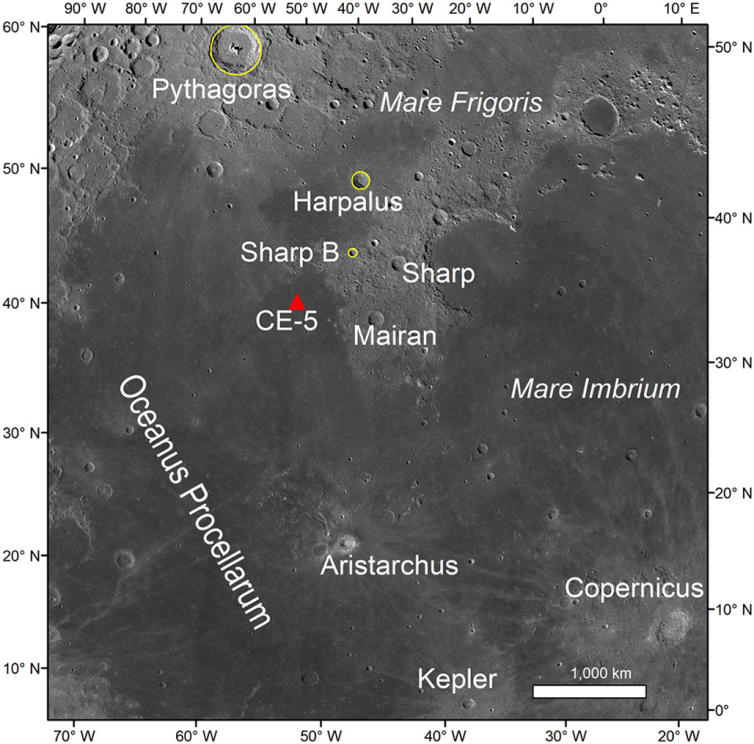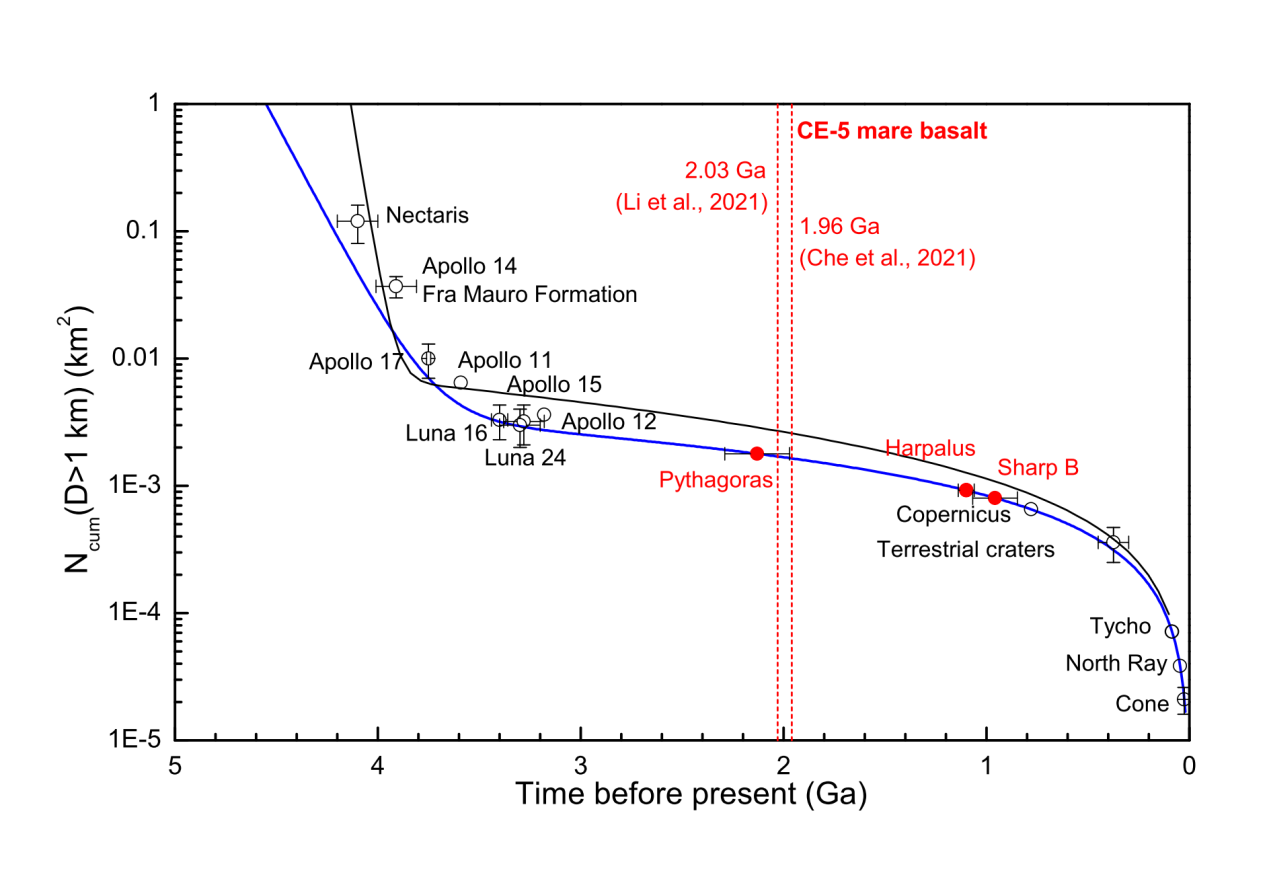SDU Planetary Science research teamfrom School of Space Science and Physics, Institute of Space Scienceshas made new progress in studying the ages of the crater in the vicinity of Chang’E-5 (CE-5) landing site. Absolute model ages of three craters in the vicinity of the CE-5 landing site and their geologic implications has been published in Icarus (Hou X, Fu X, et al., 2021, Icarus).
In November 2020, Chang’E-5 spacecraft successfully landed on the northern Oceanus Procellarum (43.06°N, 51.92°W) and collected 1731g lunar regolith samples. The landing site is covered by Eratosthenian-aged mare basalt, hence the regolith should be also mainly developed from local basalt. However, later mixing due to lunar impact events could introduce external ejecta to the CE-5 landing site. Planetary scientists from various institutes have confirmed this and concluded that ejecta from Pythagoras, Aristarchus, Sharp B, Copernicus and Harpalus craters should be the source craters of possible external ejecta. Among these craters, the ages of Pythagoras, Sharp B and Harpalus, have not yet been determined.
SDU Planetary Science research team used high-resolution images acquired by remote sensing missionS to identify the crater distributed on proximal ejecta blanket, crater floor and impact melt pools. The selected counting area and the small craters used for dating exclude the typical secondary craters such as crater clusters and crater chains. Then, absolute simulated ages and Crater density values (N(1)/(km-2)) for all three craters were obtained using the Crater-size Frequency Distribution method.

Fig. 1. The geological context of the CE-5 landing site.
The results indicate that Pythagoras is an Eratosthenian-age crater with an AMA of 2.13 ± 0.16 Ga (N(1) =1.79 × 10−3km−2). Sharp B and Harpalus are relatively young and both Copernican. The age of Sharp B craters is 1.01 ± 0.12 Ga (8.46 × 10−4km−2). The age of Harpalus crater is 1.10 ± 0.04 Ga (9.22 × 10−4km−2). Combined with the latest results of CE-5 basalt dating, the stratigraphic relationship of CE-5 landing site was constructed in this study. The ejecta from Pythagoras crater may be beneath the CE-5 basalt flow, while the ejecta from Harpalus and Sharp B may be located on the surface of CE-5 landing site. We can concluded that the ejecta materials from Sharp B and Harpalus might have been mixed with the lunar regolith in the CE-5 landing site.

Fig 2 The obtained crater ages in the lunar cratering chronology
Like young CE-5 basalt samples, impact ejecta also have important chronological significance. For instance, highland ejecta studies from the Apollo 12 and 17 missions yielded the age of Copernicus and Tycho crater, respectively. In future laboratory study of CE-5 sample, we proposed to pick up impact melts/glases and determine the ages of impact events using Ar-Ar method. The combination of laboratory impact ages and cratering density values from remote sensing studies will also contribute a new anchor to lunar chronology curve.
In recent years, SDU planetary science research team has achieved a series of research achievements in lunar geology, meteorite, and planetary remote sensing and spectroscopy, based on the deep space exploration missions such as the China Lunar Exploration Project (CLEP) and Tianwen-1. This work was funded by the Strategic Priority Research Program of Chinese Academy of Sciences, Pre-research project on Civil Aerospace Technologies by CNAS and the National Natural Science Foundation.
Hou, X., Fu, X., Qiao L., Li B., et al. (2021). A bsolute model ages of three craters in the vicinity of the Chang'E-5 landing site and their geologic implications. Icarus, Volume, 372.
https://www.sciencedirect.com/science/article/pii/S0019103521003857